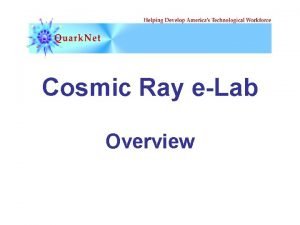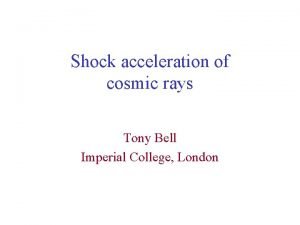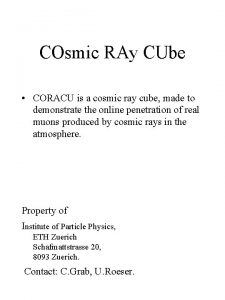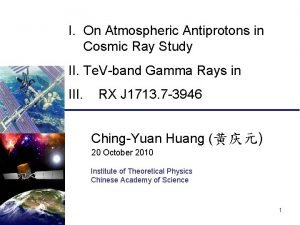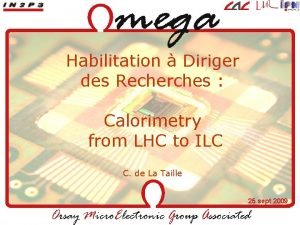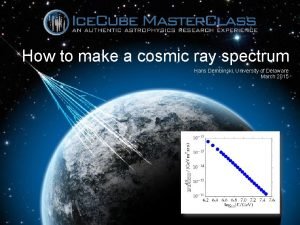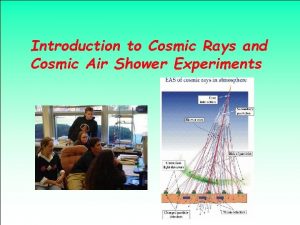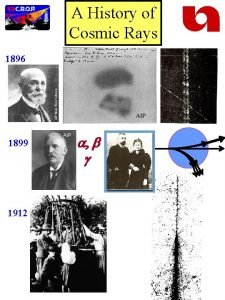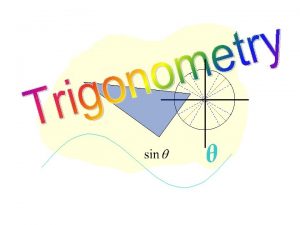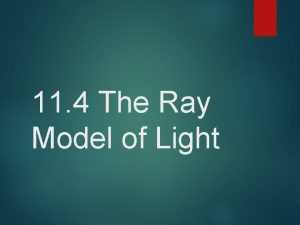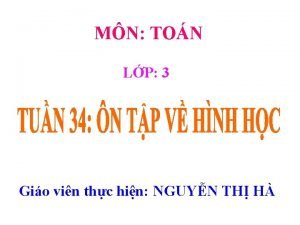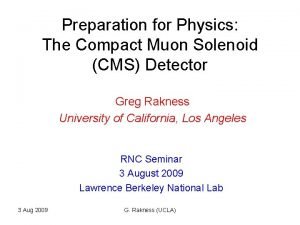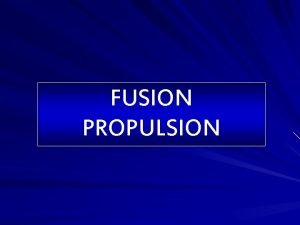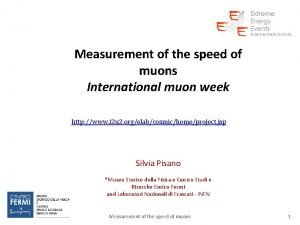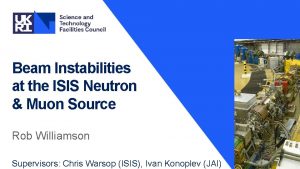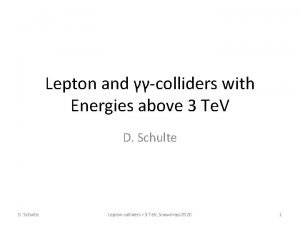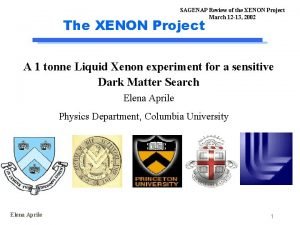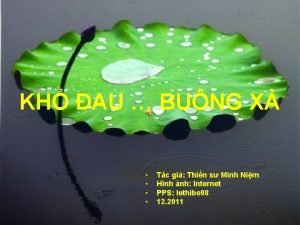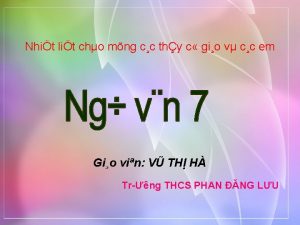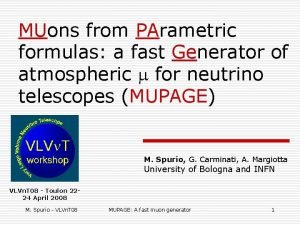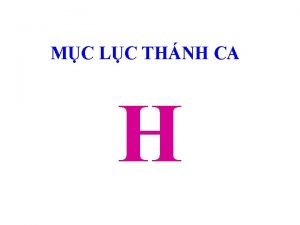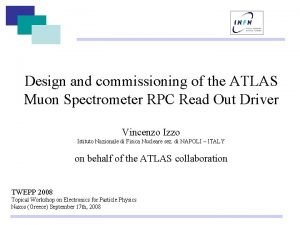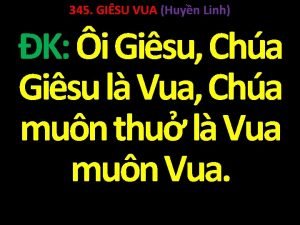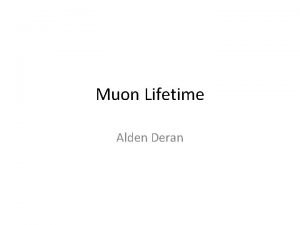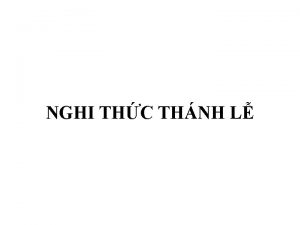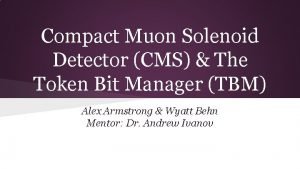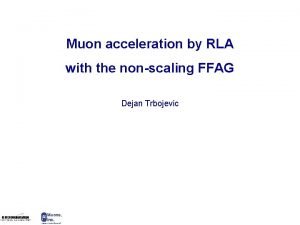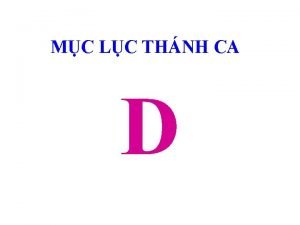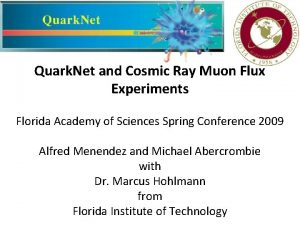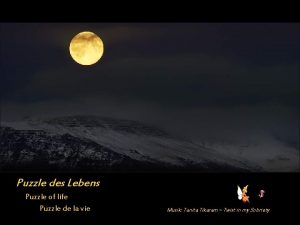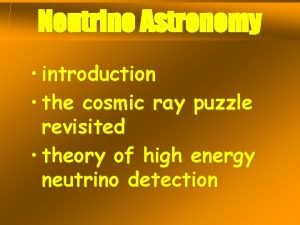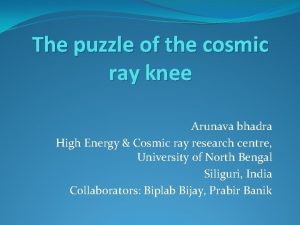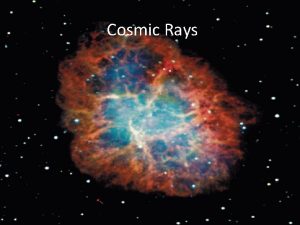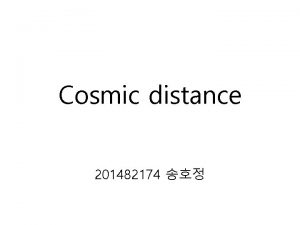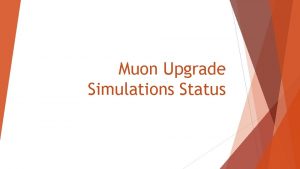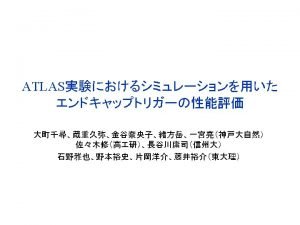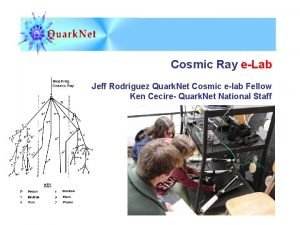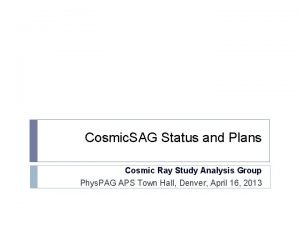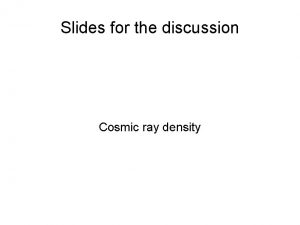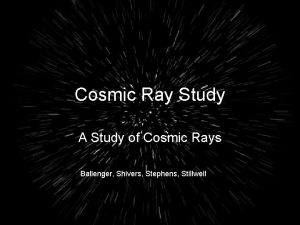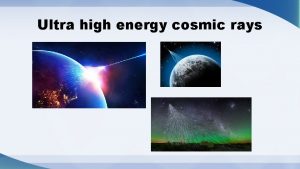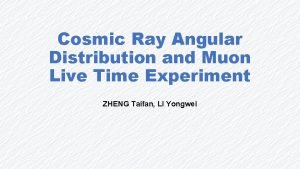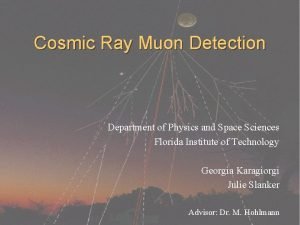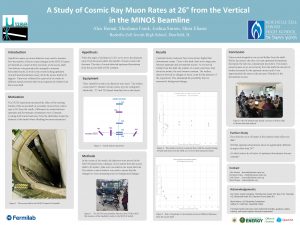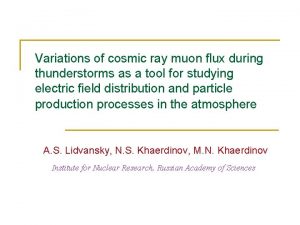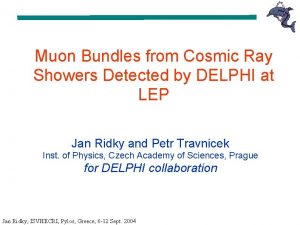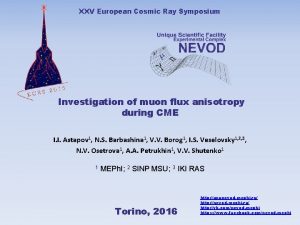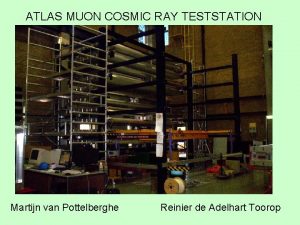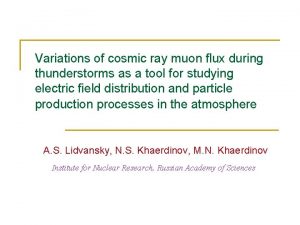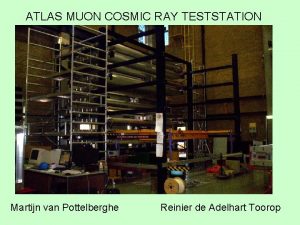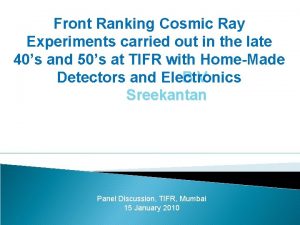RICAP 2013 Muon puzzle in cosmic ray experiments



































- Slides: 35

RICAP 2013 Muon puzzle in cosmic ray experiments and its possible solution Anatoly Petrukhin National Research Nuclear University MEPh. I, Moscow, Russia Outline 1. Introduction 2. Muon bundle investigations 3. VHE muon investigations 4. Possible explanation 5. How to check the new approach 5. Conclusion

Introduction What does mean “muon puzzle”? Short answer: Excess of muons in different experiments compared to expectations from corresponding calculations and simulations. The term “muon puzzle” was finally formulated at International Symposium on Future Directions in UHECR Physics in CERN, 13 -16 February, 2012.


Short conclusions of talks P. Sokolsky: Muon content in showers in Hi. Res/MIA higher then expected Pierre Auger Observatory: Deficit of muons in simulations. Harder muon spectra in data. M. Fukushima: Air shower at UHE is poorly understood, esp. muon (had) sector is un-healthy. T. Pierog: Discrepancy (baryon and pion spectra) between models = = Large differences in the number of muons. P. Lipari: The “muon problem”.

Muon bundle investigations

LEP Detectors (CERN) ALEPH 130 m depth (E 70 Ge. V) Hadron calorimeter, TPC 5 scintillator stations DELPHI 100 m depth (E 50 Ge. V) Hadron calorimeter, TPC, TOF L 3 40 m depth (E 15 Ge. V) Drift chambers, timing scintillators, EAS surface array

Multi-muon events (muon bundles) C. Grupen et al. , Nuclear Physics B (Proc. Suppl. ) 175 -176 (2008) 286, ALEPH J. Abdallah et al. , Astroparticle Physics 28 (2007) 273. DELPHI

General view of NEVOD-DECOR complex (Russian-Italian Project) Coordinate-tracking detector DECOR (~115 m 2) Cherenkov water detector NEVOD (2000 m 3) Side SM: 8. 4 m 2 each • σx 1 cm; σψ 1°

A typical muon bundle event in Side DECOR ( 9 muons, 78 degrees) Y-projection X-projection

A “record” muon bundle event Y-projection X-projection

Muon bundle event (geometry reconstruction)

Low angles: around the “knee” θ = 65º : 1016 – 1018 e. V θ = 50º : 1016 – 1017 e. V Large angles: around 1018 e. V

Muons in Auger

VHE (> 100 Te. V) muon investigations

Baksan underground scintillation telescope

Preliminary results of muon energy spectrum investigations in Baksan Underground Scintillation Telescope (BUST) [A. G. Bogdanov et al. , Astropart. Phys. 36 (2012) 224]

Ice. Cube results Bundle Data High p. T Muons Single Showers Double Coincident CRs

Patrick Berghaus, Chen Xu, 32 nd ICRC, 2011, Beijing Muon energy spectrum - 2011

Possible explanation

How to explain results of muon investigations? Of course, excess of muon bundles can be explained by changing of interaction model (existing attempt - EPOS). But it is more difficult to explain the excess of VHE muons, since very quick processes of muon generation are required. Also it is necessary to explain of other unusual phenomena which were detected in cosmic rays: -unusual events in hadron experiments (halo, alignment, Centauros, penetrating cascades, etc. ); - some deviations in EAS (“young” and “old” showers, large Pt, Nm/Ne-ratio behavior, etc. ). It is important to mark that all unusual phenomena appear at primary energies between 1015 - 1016 e. V.

Possible new model Production of blobs of quark-gluon matter (QGM) with large orbital momentum. This model ensures two main conditions: - threshold behavior, since for that high temperature (energy) is required; - large cross section, since the transition from quark interaction to some collective interaction of many quarks occurs: where R, R 1 and R 2 are sizes of quark-gluon blobs.

Centrifugal barrier Appearance of a globally polarized QGM with a large orbital angular momentum in non-central ion-ion collisions was predicted by Zuo-Tang Liang and Xin-Nian Wang. In this case, such state of quark-gluon matter can be considered as a usual resonance with a large centrifugal barrier. Centrifugal barrier will be large for light quarks but small for top-quarks.

Centrifugal barrier for different masses

Consequences of top-quark production Top-quarks decay: W –bosons decay into hadrons (~70%) and leptons (~30%). In the first case, the increase of the number of secondary

Muon energy spectrum

How to check the new approach?

How to check the new approach at LHC? It is very interesting, but the first results of LHC experiments confirm the new approach. There a good agreement of obtained results with predictions for pp-interactions but it is observed some deviations for nuclei-nuclei interactions. The last circumstance is very important, since in cosmic rays most part of interactions are nuclei-nuclei collisions.


ATLAS observes striking imbalance of jet energies in heavy ion collisions (CERN Courier, January/February 2011) Highly asymmetric dijet event Dijet asymmetry distributions

How to explain ATLAS results in frame of the considered approach? t W++b In the top-quark center-of-mass system: Tb ~ 65 Ge. V, TW ~ 25 Ge. V. If to take into account fly-out energy, Tb can be more than 100 Ge. V. In the case, if b gives a jet and W ~ 20 , the ATLAS experiment’s picture will be obtained.

How to check the new approach in CR? There are two possibilities to check new interaction model: • detailed measurements of inclusive muon energy spectrum near and above 100 Te. V (for that, Ice. Cube and other large detectors can be used); • measurements of the energy deposit of muon bundles and changes of its behavior with increasing PCR energy (for that, NEVOD-DECOR complex must be complimented by an usual EAS array for independent evaluation of PCR energy). This array will be constructed from Italian scintillation detectors which were used in KASCADE-Grande experiment. This work will be fulfilled in collaboration with Torino Section of INFN (A. Chiavassa).

Shower array around NEVOD-DECOR

Expected results of muon energy deposit measurements E 1

Conclusion Considered approach of production of blobs of QGM with large orbital momentum in nuclei-nuclei interactions allows solve not only “muon puzzle” but explain other unusual events observed in CR experiments (halo, alignment, Centauros, penetrating cascades, etc). Seemingly, this is a good idea which with a high probability is realized in Nature.

Thank you for attention!
 Cosmic ray elab
Cosmic ray elab Cosmic ray spectrum
Cosmic ray spectrum Cosmic ray cube
Cosmic ray cube Cosmic waves
Cosmic waves Bit flip cosmic ray
Bit flip cosmic ray Cosmic ray
Cosmic ray Cosmic ray showers
Cosmic ray showers Cosmic ray
Cosmic ray Clockwise unit circle
Clockwise unit circle Ray ray model
Ray ray model Ray casting method in computer graphics
Ray casting method in computer graphics Cách tính chu vi hình tam giác
Cách tính chu vi hình tam giác Cms compact muon solenoid
Cms compact muon solenoid Muôn thiên thần cánh trắng
Muôn thiên thần cánh trắng Muon-catalyzed fusion
Muon-catalyzed fusion đến muôn đời con cảm tạ
đến muôn đời con cảm tạ Speed of muon
Speed of muon Isis neutron and muon source
Isis neutron and muon source Muon collider
Muon collider Toshiyuki kamioka
Toshiyuki kamioka Bận lòng chi nắm bắt
Bận lòng chi nắm bắt Mênh mông muôn mẫu một màu mưa
Mênh mông muôn mẫu một màu mưa Cocine
Cocine Muôn dân mau vỗ tay ngợi khen cha
Muôn dân mau vỗ tay ngợi khen cha Muon
Muon ôi giêsu chúa giêsu là vua
ôi giêsu chúa giêsu là vua Ca vang lên nào muôn dân hỡi
Ca vang lên nào muôn dân hỡi Muon detector
Muon detector Kinh tin kính
Kinh tin kính Solend token
Solend token Mênh mông muôn mẫu một màu mưa
Mênh mông muôn mẫu một màu mưa Bnl
Bnl Con xin dâng lên muôn lời suy tôn
Con xin dâng lên muôn lời suy tôn Muon g-2
Muon g-2 Muốn tính chu vi hình chữ nhật
Muốn tính chu vi hình chữ nhật Muốn xoá một hoặc nhiều cột em thực hiện: *
Muốn xoá một hoặc nhiều cột em thực hiện: *
